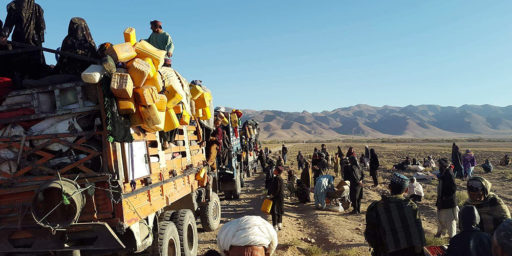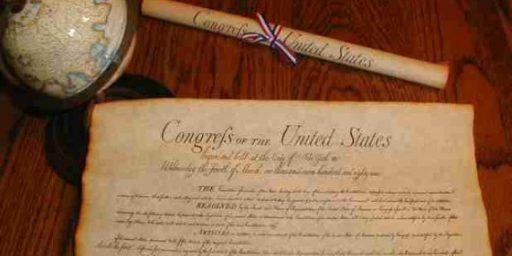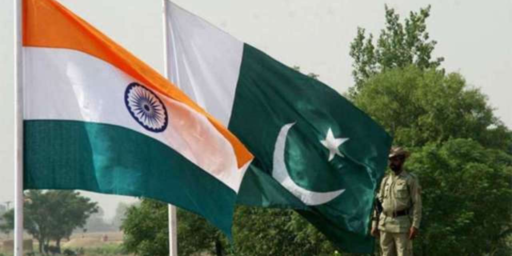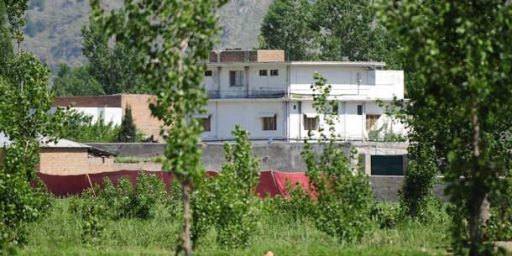Al Qaeda Survival Kit
UPI has come across something quite interesting:
A terrorist survival kit, obtained by United Press International, reveals how the Taliban, al-Qaida and their sympathizers are preparing to survive the U.S.-led war against terrorism.
The kit has been printed in several languages — Arabic, Dari, Pashto and Urdu — and is distributed secretly among the terrorists in Afghanistan and Pakistan.
The instructions aim to prepare the Taliban and al-Qaida workers and their sympathizers to survive on their own and also on how to communicate with their central leaders without exposing them. The contents show the groups are well aware of the changes brought about by the U.S.-led war on terrorism and realize they can no longer work openly. That’s why they seem to be preparing for a long, clandestine war with the United States and its allies. Decentralization and secrecy are the two key elements of their new strategy in this war, which they hope to prolong also by exploiting religious sentiments of the Muslim masses.
The point the survival kit emphasizes repeatedly is the need for the Taliban and al-Qaida workers to “merge with the masses” and thus “become indistinguishable” from the rest of the people.
The instructions show large terrorist groups have already divided themselves into three segments. The first segment is the central command, which is referred to in the kit as “markaz (the center)” or “nazm (the leadership).”
The second segment is that of small units and the third and most important is that of individual members who are “friends” and are often warned “not to meet each other unless, they must” and “not to communicate with the nazm.”
“Merge completely in the environment you live in … there will be no personal friendship, not even with the members of your own group,” the kit advises al-Qaida members.
The copy obtained by UPI comes complete with the pictures of 18 terrorists who are on the FBI’s most-wanted list. The first picture is that of al-Qaida leader Osama bin Laden, followed by his deputy Aiman al-Zawahiri and other top al-Qaida operatives.
A caption above the pictures declares: “These are mujahedin, not dangerous religious terrorists.” The caption refers to a similar list issued recently by the government of Pakistan, which identified the 18 men as “dangerous religious terrorists” and which advised Pakistanis to inform the government if they see or hear anything about them.
***
Instructions for al-Qaida units:
“If you live in an area where people wear Western dresses, you also dress like them … if the majority in that area has a secular mindset, do not express your religious sentiments.”
“Look closely at the ethnic complexion of your neighborhood … if the area has a large number of people from Punjab (a province in Pakistan), stay away from them because they often spy for intelligence agencies.”
There are instructions on how to travel, what means of transport to use in a particular area, on how to appoint one person “who looks completely benign” for doing grocery, how to use cell phones and how to deal with the local police and intelligence agencies.
“Don’t visit the local mosque regularly. Instead say your prayers at your residence, even the weekly Friday prayer … while looking for a residence, have a credible, cover story that you will tell the landlord. Always stick to that story.”
***
“Use a cell phone only when you must and an alternative means of communication is not available … it is better not to use cell phones at all … if you must use a cell phone, use the one obtained under fake name and address … never use a phone provided by your ‘nazm’ for calling a friend or a relative … if you ask your friends to call you, give them a specific time and keep your phone open only when you are expecting a call.”
***
“For using the Internet, you must go to an internet café … never visit a site that can reveal your identity, such as those belonging to FBI, al-Qaida or the mujahedin … when opening an e-mail account, go to an internet café, never do it at home … never use the same internet café again and again … before leaving the café, remove all evidence, never leave any trace … while sending an e-mail, never use the language that could reveal your ideological commitment.”
“Write your message in a word processor, compose, cut, paste and send. And then disconnect. Never let your e-mail open to write a message.






One wonders how long they can keep such secrecy up without some forms of communication.
Also, for this long, drawn out “war,” there seems to be no point of end, no time when they would declare victory. if we are fighting a war on terrorism that will never end, then the terrorists seem to be doing the same to us.
What would OBL want, anyway?
Ok, some of these things seem like common sense, but the whole, make your message in a word processor, compose, cut, paste and send?
You’re still inputing the same keystrokes so a keylogger would still get them. You have to use an e-mail app to send them, or through a web-based e-mail, which would be even less secure.
I’m a little bit surprised they aren’t using some sort of encrypted e-mail, but perhaps they are avoiding those because it would raise suspicions?
I think they’re saying to have the message already composed before you get to the Internet cafe to send it.
I guess that would work, but then you’d have to carry around either a floppy, CD, or some form of external drive to C&P your message into the e-mail form.
Seems that would make even less sense. Get hit by a car, mugged or just forget and leave it in the drive and you’re really screwed.
Maybe it’s just the sys admin in me wanting to dissect everything. *grin*
Well, off the top of my head, if I wanted to send a message without entering keystrokes, in a format that would not draw attention, I’d
go to an internet cafe and send a jpg like this by email:
http://www.katewerk.com/tempdogsplay.jpg
The message is easy to find, if you know where to look for it.